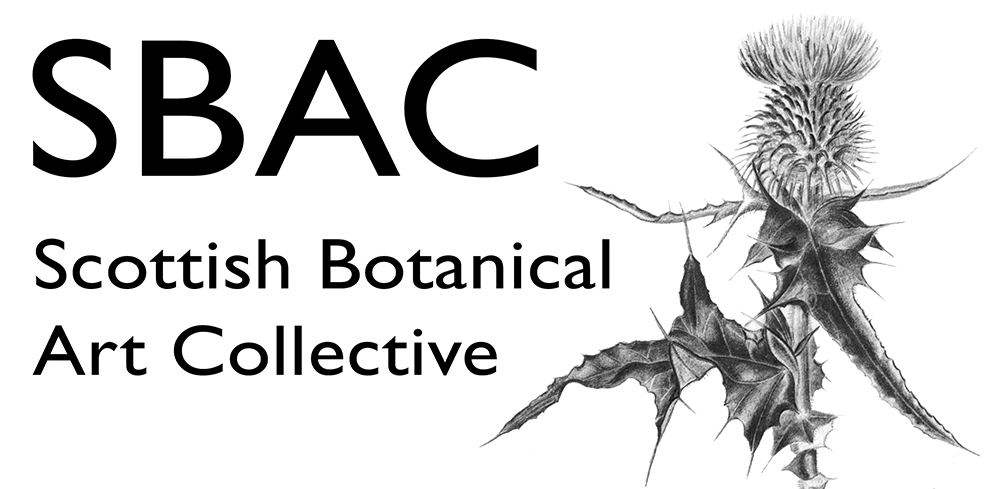Mimulus guttatus (4x) – Janet Watson

It was from the 6pm BBC news broadcast on Wed. August 16th 2017 that I first heard and saw a new type of Shetland monkeyflower discovered at Quarff in Shetland. The following day I read a newspaper article about it and its discoverer, Dr Mario Vallejo-Marin, an associate professor from Stirling University. Many years earlier, I myself had completed a PhD on evolution at Stirling University so I phoned him to express my interest and to ask if he had thought of having this attractive plant painted by a botanical artist. Following his invitation, I met him at Stirling University the following day.
Imagine our surprise when we discovered the my PhD supervisor in 1968 (Dr Janis Antonovics – now FRS) was also Mario’s PhD supervisor at Duke University, North Carolina many years later! What a small world!
Mario showed me the monkeyflower growing in the growth chamber and also a plant he had flown to Shetland to collect for the BBC and newspaper publicity. They had insisted that they have photographs of a plant grown in Shetland. He had brought it back on the plane in hand luggage.
It is thought that this new form of Shetland monkeyflower is a tetraploid form of Mimulus guttatus which has evolved in a small area of Shetland over the last 200 years from a North American species which spread through Britain in the 1800s.The plant is tall and very striking with beautiful yellow flowers with small red dots dissimilar from the typical monkeyflower. The leaf margins are also dissimilar.
Mario asked me to go ahead with the painting and he gave me the plant that he brought back from Shetland viz. a flowering stem that had rooted. When I received it at lunchtime on Friday 18th August, it had 3 flowers, one of which was about to drop off, a bud and a stem with paired, curved leaves and a side shoot. I realised very quickly that this would be a challenge. By teatime, the flower had fallen off and by Saturday teatime, the other two flowers had fallen off! Meantime, I had taken a lot of photos, a lot of measurements, I had completed dissections of the flowers and several drawings and colour matchings. I had also placed pollen from the fallen flowers on to the stigmas left behind on the stem. I was fascinated to see the sides of the stigma close together over the pollen about 5-10 minutes later. The fruits which develop are a very striking shape and colour.
The work continued apace. I completed a painting of the flowering stem and side shoot but I had been sent an image of the RBGE herbarium specimen. The lower leaves of the plant were 4 times larger than the leaves on the upper part of the flowering stem and it was difficult to determine the growth habit of the lower leaves. As I was to be the first to paint this ‘new’ unusual plant, I thought I should make a more complete painting showing the roots, the lower parts of the plant and flower dissections as well as the flowering shoot with its side shoot. For this, I was given a huge pot containing just 1 plant with many roots and many shoots with the larger lower leaves. The growth habit of these leaves is so different from that of the upper leaves.
Several weeks later I completed the painting. The Shetland monkeyflower is a very handsome plant and I thoroughly enjoyed the many challenges it presented. Mario and I are so delighted that the painting is to be displayed in the exhibition and the book.
